Civic engagement builds strong communities. Volunteering, participating in local elections, advocating for causes you care about, and simply staying informed are among the ways to help shape a brighter shared future. In this article, we will dive into some ideas for getting more involved in your community to make a positive impact.
What is Civic Engagement?
Civic engagement is the active involvement of citizens in the processes of democracy. This can include voting, public debate, and contributing to the community as a volunteer, for example. As the National Democratic Institute puts it, “Civic participation means being an active member of one’s community and society, and fulfilling one’s social and political responsibilities. It means advocating for the issues and causes that matter to you, and engaging in dialogue and debate with those who hold different views.”
Civic engagement requires working together to address shared challenges. At the local level, this allows people to have a direct impact, which fosters a sense of ownership and constructive empowerment.
“Civic engagement is about taking responsibility for the well-being of our communities and working together to create a brighter future for all.”
– Barack Obama, former President of the United States
Studies have found that civic engagement fosters improved mental health, increased social connections, and a stronger sense of purpose. Communities with high civic engagement also generally experience less crime.
5 Types of Civic Engagement
Here are five common types of civic engagement to consider when looking for ways to get more involved:
Volunteering: Whether it’s working at a soup kitchen or helping out at the local library, volunteering is a great way to pursue your passions while giving back.
Advocacy: Speaking out about important issues such as affordable housing provides a powerful platform to directly seek change in your community.
Community organizing: Organizing a community garden or setting up a community watch are examples of community organizing that can have a positive impact where you live and work.
Civic education: Being informed about how government works, and knowing your rights and responsibilities are essential components of constructive civic engagement. Knowledge is power.
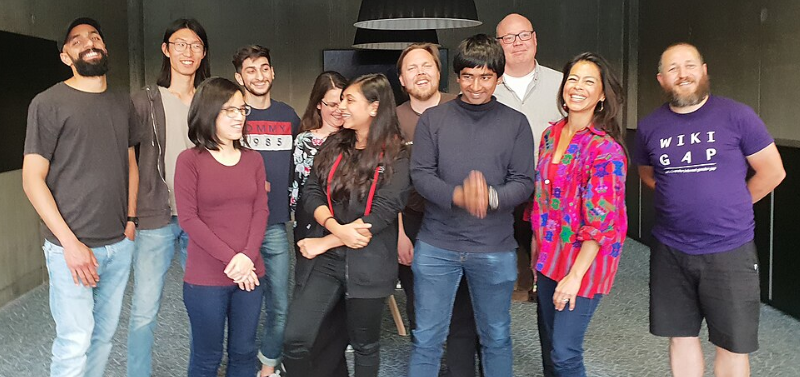
A group of volunteers. Image credit: Eric Luth (WMSE), Wikimedia Commons
Are you ready to make a positive impact on your community? Dive into the world of Civic Engagement with Instant Input! Sign up today and see how easy it can be to foster better connections and get the feedback you need!
Examples of Civic Engagement Making a Local Impact
Here are three examples of projects around the United States where civic engagement is driving positive change:
Community Gardens: Over the past decade, Ron Finley has been responsible for the creation of around 10 community gardens in South Central Los Angeles, a “food prison,” as he describes it, largely devoid of fresh produce. The gardens have taken root in blighted areas such as abandoned lots, and provided an outlet during the pandemic. ““A lot of people are banding together and realising ‘it’s not just about me’,” he told The Guardian. “It’s definitely going to strengthen communities. The death is crazy, how people are dying all over the world. In our lifetime we haven’t seen anything like this … My wish is that this is a true shift, and that people go out and design the lives they want to live.”
Neighborhood Association: In 2012, a group of Madison, Wisconsin residents formed the Eastmorland Community Association to address challenges affecting their neighborhood, such as crime, traffic, and zoning. The association has become a successful quality of life advocate in the community.
Community Development Corporation: The establishment of a community development corporation: In 1968, in Newark, New Jersey, a group of local activists created the New Community Corporation to address issues of poverty and inequality in the city. The organization has since become a major force in the community, developing affordable housing, providing job training, and offering healthcare services.
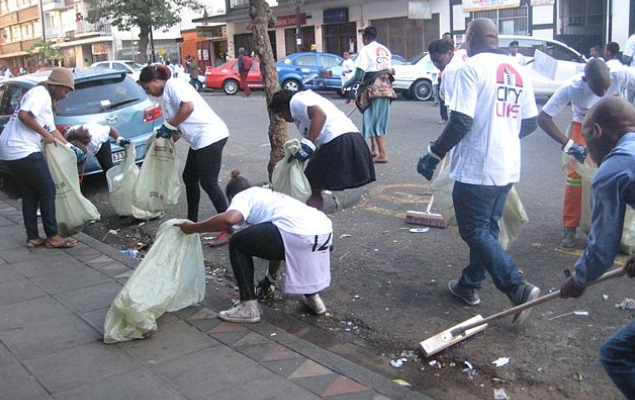
Image credit: Student Central Durban, Wikimedia Commons
Community Involvement Dos and Don’ts
Understanding some of the dos and don’ts of community engagement helps facilitate meaningful and effective collaboration within our communities. Here are a few examples:
Dos:
Do listen to the needs and concerns of community members.
Do build relationships with community members.
Do be transparent about your goals and intentions.
Don’ts:
Don’t assume you know what the community needs. (Platforms like Instant Input make it easy to gather feedback from community members.)
Don’t make promises you can’t keep.
Don’t ignore community members’ feedback and concerns.
For a more comprehensive guide to community involvement, check out these Community Toolkits developed at the University of Kansas.
Make your thoughts and opinions count! Sign up for Instant Input to provide real-time feedback and help guide community projects.
Civic Education and Fostering an Ownership Mentality
The development of a “ownership mentality,” in which people learn to actively participate in determining the destiny of their communities, depends on civic education. Through this process, young people take control of their own destiny and become more invested in creating beneficial shared outcomes. The most crucial element in establishing an ownership mentality where various community members are involved in determining the destiny of their neighborhoods, towns, cities, states, and country is creating a sense of shared ownership and civic duty, empowered by education beginning at the grade school level.
In the process of civic education, people are taught about their rights and obligations as citizens, how the government operates, and how civil society functions. Voters, members of the community, and leaders who are knowledgeable about civics are better prepared to make inclusive, sustainable decisions.
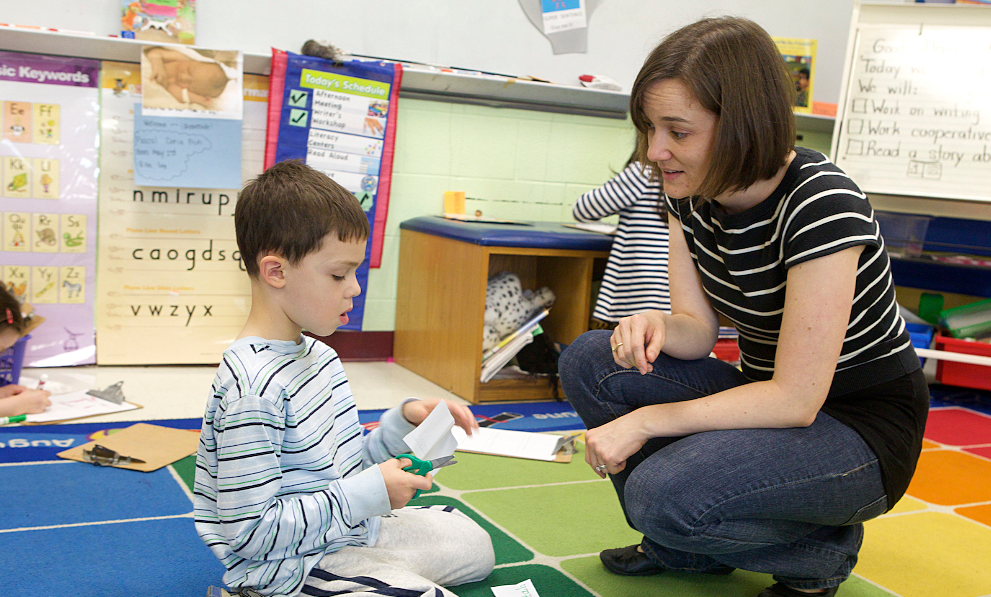
Image Source: US Dept. of Education, Wikimedia Commons
As Newt Gingrich, former Speaker of the U.S. House once put it, “An ownership society empowers individuals by giving them the tools to build a better life for themselves and their families. It encourages participation in civic life, values volunteerism, and recognizes that we all have a stake in the future of our communities and our country.”
Policymakers and advocacy organizations have cited civic education as a top issue at the federal level. 2018 saw a request from the National Task Force on Civic Learning and Democratic Engagement for a “national campaign to ensure that all young people have access to high-quality civic learning experiences.” A similar appeal for a greater emphasis on civic education in public schools has been made by the Campaign for the Civic Mission of Schools, which emphasizes the significance of training children for engaged and responsible citizenship.
Recent evidence, however, indicates that civic education may not be a top focus in many American public schools. Only 27 states mandate that high school students take a civics or government course, and only nine states demand that students complete a full year of such education, according to a 2018 research from the Center for American Progress. The study also discovered that children from low-income families and pupils of color had a lower likelihood of receiving civic education. This lack of civic education may have detrimental effects on democratic institutions, such as a reduction in civic engagement and voter turnout.
Despite these challenges, civic education is beginning to advance. Many states and school districts are creating cutting-edge civic education initiatives like project-based learning, service learning, youth-led activism, and others. Recent events like the January 6th attack at the U.S. Capitol have also highlighted the urgent need for civic education that covers topics like social justice, media literacy, and constitutional values. By putting civic responsibility first and giving students the knowledge and skills they need to participate successfully in civic life, the United States can build a better, more resilient democracy.
Building a Healthy Democracy through Civic Engagement
Voting and political involvement are essential components of a functioning democracy because they allow individuals to have a voice in the decisions that have an impact on their lives and the communities where they live. However, not all groups in the US have equal access to the polls. Records from the U.S. Census Bureau reveal that voter turnout differs significantly by demographic group. For instance, voters with a bachelor’s degree or above cast more ballots (68%) than those with less education (34%) during the 2020 presidential election.
Family income is a significant factor in voting turnout. Only 55% of voters in houses with annual incomes of less than $50,000 reported casting a ballot in the 2020 election, compared to 83% of voters in households with annual incomes of $150,000 or more. Geographical geography also has an impact on voter turnout, with some areas of the nation having higher participation rates than others. For instance, the West had the lowest voter turnout (59%) and the Northeast had the highest (68%) in the 2020 election.
Barack Obama, a former president, famously stated that “the vote is the most powerful instrument ever devised by man for breaking down injustice and destroying the terrible walls which imprison men because they are different from other men.”
National Registration Day and How You Can Volunteer
Every year on the fourth Tuesday in September, the nonpartisan civic holiday known as National Voter Registration Day (NVRD) is observed. The holiday, which was first recognized in 2012, aims to promote civic participation and voter registration among eligible voters. A consortium of groups, including the League of Women Voters, Rock the Vote, and the National Association of Secretaries of State, is in charge of organizing the event.
Using their time and talents to assist in registering eligible voters in their communities, people are encouraged to take part in the National Voter Registration Day campaign by volunteering for the program Volunteer for National Registration Day. Volunteers can become involved in a number of ways, such as organizing voter registration drives, going door-to-door in their communities, or assisting people who want to register to vote online.
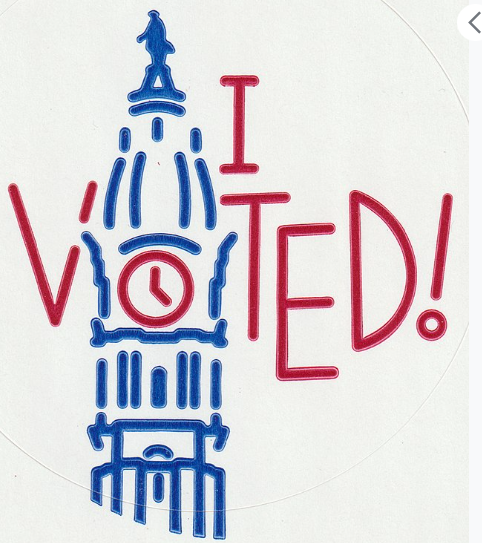
I Voted PA sticker. Image credit: Wikimedia Commons
In their capacity to encourage civic engagement and participation in the political process, National Voter Registration Day and the Volunteer for National Registration Day program are important. Individuals can ensure that their votes are counted in local, state, and federal elections by aiding in the registration of eligible voters. Additionally, we may seek to create a more inclusive and representative democracy that reflects the various viewpoints and interests of all Americans by expanding the number of registered voters.
National Voter Registration Day volunteers can sign up for volunteer opportunities in their area by visiting the official NVRD website. The website offers resources and tools to aid as well as information on how to become engaged.
Why National and Community Service Are Important
Because they give people the chance to band together and improve their neighborhoods and the world, national and community service initiatives are important. People have the chance to develop their talents, gain experience, and form relationships to their communities through this kind of contribution.
Listed below are a few well-known service organizations:
More than 75,000 Americans participate in AmeriCorps service initiatives each year. In addition to educating and mentoring, AmeriCorps members also help with disaster relief and environmental preservation.
American volunteers are sent to communities all over the world by the Peace Corps to assist with tasks like health, education, and economic development. The local culture is fully embraced by Peace Corps volunteers, who also learn the language and form bonds with locals to foster greater intercultural understanding and collaboration on humanitarian issues.
Families in need can get help building affordable homes from Habitat for Humanity. Volunteers assist Habitat for Humanity with fundraising, building projects, and other tasks.
Don’t let your ideas go unheard. Join Instant Input today to directly influence projects and plans in your community.
Civic Participation, Public Health Efforts and The Elderly
Helping the elderly benefits those in need. Here are a few illustrations:
Reducing social isolation: For older people, social isolation is a significant risk for poor physical and mental health outcomes. Volunteers can help decrease feelings of loneliness and social isolation by offering companionship and social support, which can enhance overall health results.
Increasing access to healthcare: Seniors frequently need routine medical attention, but they may encounter obstacles getting those services. Volunteers can help seniors receive the attention they require to maintain their health and wellness by facilitating transportation and accompanying people to appointments.
Promoting healthy behaviors: Volunteers can assist in encouraging older persons to adopt healthy habits including regular exercise and a balanced diet. Volunteers can help people maintain healthy habits that can enhance overall health outcomes by offering support and direction.
Increasing sense of community: These initiatives can contribute to the development of more robust, resilient communities by encouraging interactions between volunteers and senior citizens. The general health and wellbeing of the community may benefit as a result.
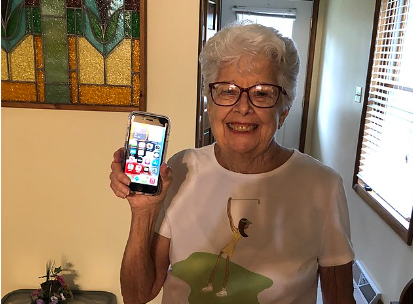
Image Credit: Francycharles, Wikimedia Commons
Local people can make a big difference in helping the elderly in their neighborhoods, especially those who might be isolated or have limited access to services. The Senior Companions program, run by the Americorps Corporation for National and Community Service (CNCS), is an illustration of a successful initiative that assists in establishing connections between volunteers and senior citizens.
Through the Senior Companions program, elderly people in need of help with daily activities like food shopping, transportation, and simple house maintenance are matched with trained volunteers. Additionally, volunteers offer social and emotional assistance, acting as a welcoming and dependable presence for people who might be living alone, or feeling socially isolated. The program not only offers vital assistance to older people but also beneficial possibilities for volunteers to give back.
In Fort Collins, Colorado, where the program has been running since 1974, the Senior Companions program continues to make an impact. Approximately 90 trained volunteers support the program, which is run by Volunteers of America. The program has been effective in raising the quality of life for both the volunteers and the senior citizens they assist. Elderly participants reported feeling less lonely and more a part of their communities, while volunteers reported experiencing a better sense of purpose and fulfillment.
Supporting Nonprofit Organizations
In the United States, there are thousands of nonprofits and it’s very likely you can find one that matches your interests. Giving your time and skills to a nonprofit is one of the most effective ways to support it. Nonprofits frequently rely on volunteers to deliver their services and programs, and volunteers can help nonprofit organizations grow and have a greater effect.
Financial contributions are critical for the sustainability and growth of nonprofit organizations. Donations can help support programs and services, as well as cover operational costs such as rent and staff salaries.
Nonprofit organizations often rely on word of mouth and community support to raise awareness and build momentum for their work. By sharing information about nonprofits on social media, in conversations with friends and family, or through other channels, individuals can help raise visibility and support for nonprofit organizations.
Jonathan Reckford, the CEO of Habitat for Humanity International, emphasizes the importance of community involvement in supporting their work: “We know that building affordable homes and creating thriving communities requires the support of everyone – donors, volunteers, and community partners. Together, we can ensure that everyone has a decent place to call home.”
Volunteering for a Political Party or Candidate
A excellent approach to become engaged in the democratic process and improve your community is to volunteer for a political party or candidate. Several ways to volunteer for a party or candidate are listed below:
Phone banking: To reach out to potential voters and inform them about their candidate, many political campaigns rely on phone banking. Volunteers can assist by making calls using a script supplied and responding to inquiries from voters.
Canvassing entails going door to door in a neighborhood or town to talk to people and spread knowledge about a candidate. Volunteers can assist in distributing flyers or other campaign materials during canvassing, which can be done alone or in groups.
Outreach via social media: As social media has grown in importance as a tool for political campaigns, volunteers can contribute by publishing content, interacting with followers, and disseminating information about a candidate or party.
Working at polling places: On election day, political parties frequently require volunteers to assist with voter registration, ballot distribution, and smooth voting operations.
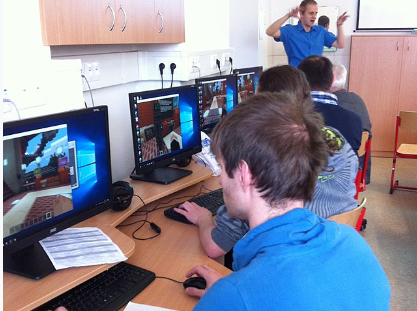
Image Credit: Muselsom, Wikimedia Commons
Volunteer recruitment platforms, such as Mobilize and VolunteerMatch, offer opportunities to connect with political campaigns and organizations. Alternatively, simply visitng the social media profiles and websites of candidates provides a way to connect.
Technology and Civic Engagement Platforms
Technology has completely changed the civic engagement environment and given people new, creative methods to take part in the political process. In order to engage citizens in political dialogue, action, and decision-making, these platforms make use of digital resources including social media, smartphone applications, and online forums. Technology-driven civic engagement platforms like Instant Input bridge the gap between citizens and their representatives, fostering openness, inclusion, and accountability. They do this by enabling quick access to information, providing a channel for community feedback, encouraging open debate, and coordinating collective action. These platforms have the power to mobilize communities, elevate underrepresented perspectives, and influence public opinion, ultimately changing the nature of civic engagement in the digital era.
FAQs
The term “civic engagement” describes people actively participating in their communities and in the political process. It entails people becoming involved in politics, voicing their thoughts, and making a positive impact on society. Voting, volunteering, advocating, attending public events, and participating in conversations about social and political concerns are all examples of civic engagement initiatives.
Start by looking at neighborhood community organizations, non-profit organizations, and governmental organizations in your area to identify civic engagement events to get engaged with. For details about forthcoming events, volunteer opportunities, or campaigns, visit their websites or social media profiles. Additionally, get in touch with your neighborhood library, community center, or schools, since they frequently organize workshops or talks on civic engagement. Finally, think about joining online civic engagement platforms and forums where you may network with like-minded people and discover pertinent local events.
Civic engagement generally has positive effects, but there are also some risks. One risk is the possibility of polarization and separation among communities as conflicting viewpoints and unpleasant debate emerge. Additionally, those taking part in civic activities may encounter opposition or threats from those who disagree with their beliefs. Individuals who participate significantly in civic activities run the danger of burnout or tiredness since the demands and duties can be time-consuming and onerous.
Consider participating in numerous events and platforms to connect with people who are passionate about the same things you are. Connect with like-minded people by attending community events, workshops, or seminars in your area that are linked to the cause. Join appropriate social media groups, forums, or online communities where networking opportunities are abundant. Volunteering with groups that support the cause can provide you the chance to connect with others who are actively interested. Inquire about any forthcoming events or volunteer opportunities by contacting neighborhood advocacy groups, non-profits, or community centers.







